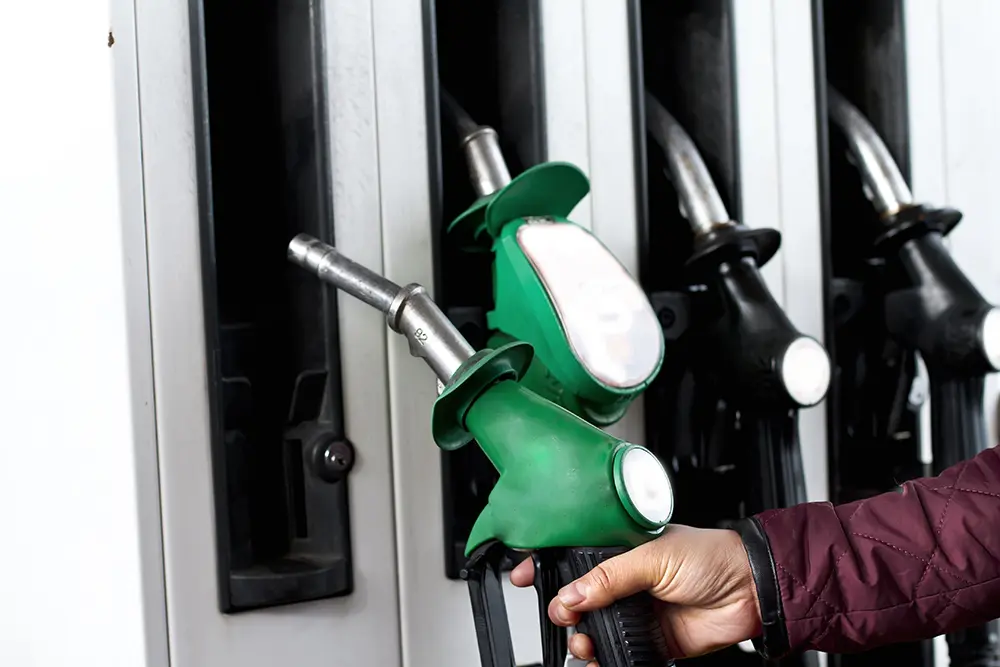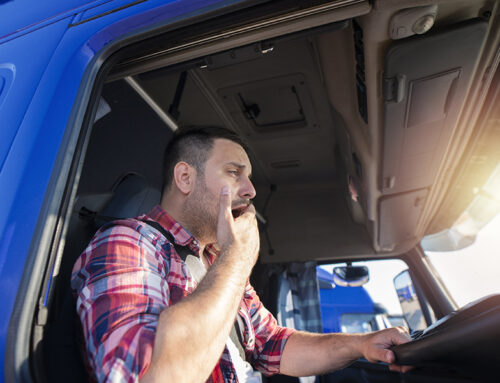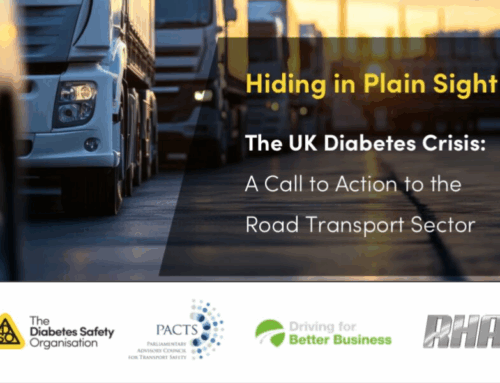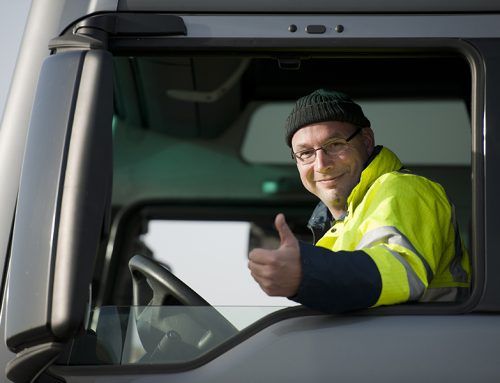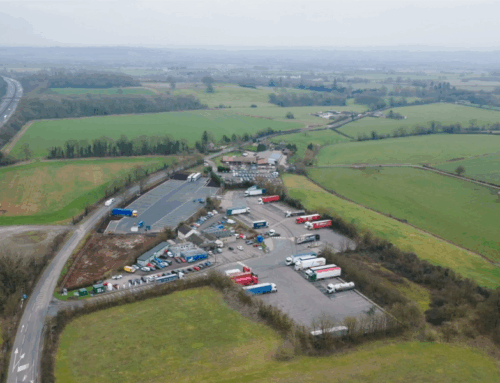Andy Eastlake has a background in engineering that has seen him involved in vehicle crash testing, emissions optimisation, fuel economy, electrification and, most recently, clean air strategy and government policy. He is convinced that improving transport safety and air quality must increasingly go hand in hand.
And he believes that much can be done to further this symbiosis – with important benefits for the environment as well as for business profitability.
As managing director of the Low Carbon Vehicle Partnership (LowCVP) Andy, 53, is immersed in the transport industry, and says that one of the big hopes of fleet managers and business is that the race towards electrification – and increasingly widespread use of ADAS – will continue to drive costs down.
“As a society nobody wants to be profligate with energy in any form,” says Eastlake, whose job involves providing expert advice and support to the Department for the Transport.
“Reduced energy consumption is a key issue at the moment in the transport sector and that’s good for many reasons; it not only helps keep our air cleaner, it also helps reduce carbon emissions and, for businesses, it reduces energy costs which means lower fuel bills.”
Eastlake is realistic about future progress on these twin fronts, however: “Despite huge advances in electrification, we are going to be using the combustion engine for a very long time, and in the heavy duty truck arena, for even longer, so we need to be thinking about how we can save energy – and costs – in new ways, now.”
According to Eastlake, the drive for ever better air quality and safer vehicles will continue to deliver important benefits for fleets and the transport sector for years to come – but only if it is managed correctly.
“The opportunities that will arise for businesses not just from a practical, safety, point of view, but for economic efficiency too are very exciting,” says Eastlake. “This is because the very same ADAS benefits that give you safer driving, will increasingly deliver more fuel-efficient driving too.
“We see increasingly that these things go hand in hand, with technology that delivers better anticipation, smoother driving, relatively gentle acceleration and controlled braking all improving safety and fuel economy.”
Eastlake says there are ‘interesting correlations’ emerging in the way that the latest, advanced vehicles behave. “For example in an electric vehicle, by braking gently you can recuperate a lot more of the energy. There are important ramifications for air quality, safety and firms’ bottom lines. But it’s all about knowing how to get the best out of your technology.”
Eastlake believes that while talk about the imminent arrival of the fully autonomous vehicle is over-hyped, major benefits are already flowing from driver-assistance technology being built into new vehicles.
To date, he says, much of it has been aimed predominantly (and rightly) at improving road safety but there is the possibility this comes at the expense of that other major benefit that all fleet managers crave; fuel savings. This is something he wants to see change.
“As the technology develops, ADAS will increasingly pay dividends in both directions,” predicts Eastlake. “Take adaptive cruise control for instance. At the moment the result can sometimes be quite jerky, as the truck or car works to preserve the distance from the next vehicle along the motorway or congested street, rather than smoothing parameters that would give benefits in fuel economy and be a bit more predictive.
“My belief is that it is difficult for developers to work on both of these important objectives at the same time in ‘young’ technology. There is a natural tension between these two competing strands but increasingly the algorithm that governs that safe distance, for instance, will also take account of energy use so that these aspects are no longer developed in isolation. They will work better together.
“As driving assistance matures, as technologies such as cruise control and city driving technology improve, we shall undoubtedly see increasing benefits to both safety and fuel use.”
The benefit for society at large, says Eastlake, is that as engineers become more confident with the safety aspects of ADAS, low carbon objectives will come increasingly to the fore.
One important symbiosis to have emerged – one that proves the exception to the ‘safety first’ rule – is advances in truck platooning, says Eastlake.
“These developments were predominantly designed for fuel economy and road space benefits, with the overall truck train getting a significant fuel economy above running separate trucks,” says Eastlake. “But clearly this exciting technology can improve safety too. It’s another example of how we need to join those two aspects up more closely, then think about how it can extend to car and van design too.”
Currently, says Eastlake, designers developing algorithms for fuel economy – and those designing algorithms for safety – are often ‘not even in the same room’, adding: “I think now the aim should be to bring these strands together more, although it won’t happen overnight.”
This is one area, says Eastlake, where LowCVP plays a key role. “We are becoming the carbon conscience of these developments. So we are saying that when we are developing these technologies, let’s make sure the carbon issue is embedded in there as part of the data set against which things are measured.”
Eastlake urges caution however as engineers strive to improve current technology. “Take autonomous vehicles as an example. They may be very convenient but if we end up replacing double decker buses with 80 autonomous vehicles driving around, we would have failed on a carbon basis. And the same thing is true in other streams of transport.
“It’s about making sure we don’t plough a furrow that does not take a holistic approach to efficient mobility.”
A second major challenge, says Eastlake, as the latest transport technology becomes more complex, is for users to understand how to get the best out of it. “It requires a different mind-set,” says Eastlake. “Even with something like an electric vehicle it means driving slightly differently, adopting a different way of braking.
“Unfortunately best practice principles for fuel economy have been around for a long time and in many cases have not been updated for the latest generation of vehicles with all their driver aids. This needs re-thinking so that business can derive the maximum benefits. This is an area that organisations such as the Energy Savings Trust could help progress.
“The other big emerging problem is that with so many fleet managers trying different telematics systems now the sheer amount of data this generates is simply overwhelming.
“Data itself is not knowledge until you do something with it and analyse it. And the capability of vehicles to deliver data is way beyond the capacity of the fleet manager to process it; it’s just too much. There’s a real skill in gathering data and deriving really good knowledge and information in an accessible form.
“I do not have a solution otherwise I would be a millionaire but we should be asking whether we look at it at a single fleet level – or whether in fact there is a greater role for say a government-funded organisation like the Transport Systems Catapult to rise above commercial interests, and step in further. They could look at all this data that is sitting there in individual businesses and actually do something very useful with it at a macroscopic level. The benefits for fleets could be enormous.”
Another passion of Eastlake’s is speed control technology, having seen it demonstrated in Gothenburg recently. “Surprisingly, drivers say they love it,” he says. “In a 20mph zone through an urban centre they can concentrate on hazards in the environment around them rather than worrying about controlling their speed and constantly looking at the speedometer.
“I would like to see more of it on cars, vans and trucks as it unburdens the driver to concentrate on things the driver should be concentrating on; it’s a safety issue – and of course one that also delivers fuel economy benefits so it’s win-win for everybody.”
Eastlake believes that only ‘more enlightened’ fleet managers will introduce more technology of this type into the van sector however.
“They need to realise that yes, it’s a safety benefit and it avoids speeding tickets, but it also saves fuel and money. To date, I don’t think that the benefits of focused speed control have been articulated very well, partly because there’s been insufficient evidence to demonstrate the advantages. This is another area where we need more research, so that we have the evidence base to say why it needs to be implemented more widely.”
Another area deserving more attention, says Eastlake, is the ‘major focus’ on big truck safety in vision and collision avoidance, which has yet to filter down effectively to the van market. “It’s an area we really need to think about.”
Eastlake is nothing, however, if not practical. “If there’s one thing I’ve learned during my career, including my 26 years engineering at Millbrook, it’s that as an engineer you never stop learning, you are never fully trained and never bored. I enjoy that aspect.
“We just need to keep on listening, looking – and learning and the rest will follow.”
Andy Eastlake, Managing Director, Low Carbon Vehicle Partnership
 Andy Eastlake was appointed LowCVP’s Managing Director in April 2012, after serving both on the board and for many years as Chair of the Members Council. Andy has a strong background in vehicle engineering, specialising in powertrain developments, fuel efficiency and emissions. As MD he has been closely involved in the design and implementation of the latest testing and accreditation schemes for a variety of vehicles, including buses and HGVs and most recently leading the work on retrofit emissions technology accreditation. Andy and the LowCVP have a key role supporting DfT, DEFRA and OLEV in stimulating the uptake of low carbon and low emission technologies and fuels across all vehicle sectors, to deliver the long term transport strategy. Andy is a Fellow of the Institution of Mechanical Engineers.
Andy Eastlake was appointed LowCVP’s Managing Director in April 2012, after serving both on the board and for many years as Chair of the Members Council. Andy has a strong background in vehicle engineering, specialising in powertrain developments, fuel efficiency and emissions. As MD he has been closely involved in the design and implementation of the latest testing and accreditation schemes for a variety of vehicles, including buses and HGVs and most recently leading the work on retrofit emissions technology accreditation. Andy and the LowCVP have a key role supporting DfT, DEFRA and OLEV in stimulating the uptake of low carbon and low emission technologies and fuels across all vehicle sectors, to deliver the long term transport strategy. Andy is a Fellow of the Institution of Mechanical Engineers.
Andy Eastlake was talking to David Williams, award-winning transport and road-safety journalist, who writes for national publications including the Evening Standard, the Sunday Telegraph and Daily Telegraph.

